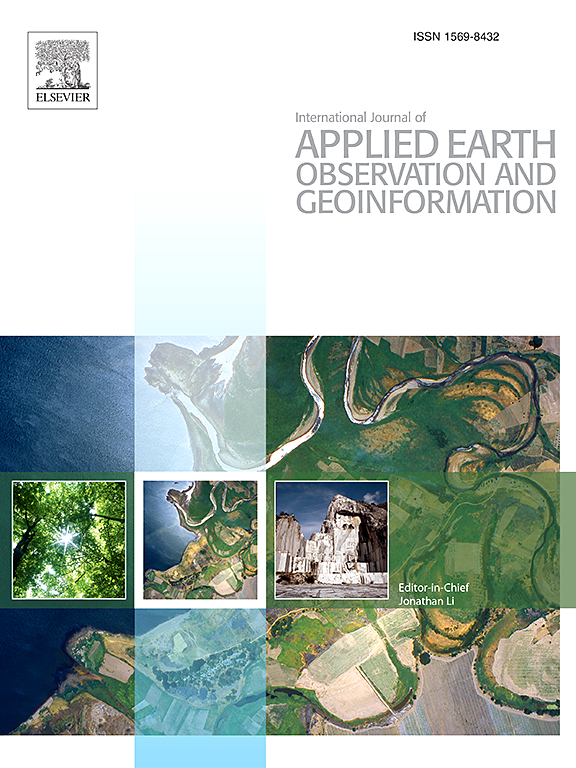Evaluating multi-seasonal SAR and optical imagery for above-ground biomass estimation using the national forest inventory of Zambia
IF 7.6
Q1 REMOTE SENSING
International journal of applied earth observation and geoinformation : ITC journal
Pub Date : 2025-03-25
DOI:10.1016/j.jag.2025.104494
引用次数: 0
Abstract
Mapping forest above-ground biomass (AGB) is crucial for monitoring forest ecosystems and assessing the success of conservation initiatives such as the REDD + carbon projects. Traditional field-based approaches to measuring AGB, however, face significant challenges, due to high financial costs and logistical constraints. Remote sensing, including both active and passive sensors, presents a promising and cost-effective alternative, yet its practical utility and accuracy for capturing forest AGB in diverse and complex ecosystems remains largely unexplored. This research used an extensive national forest inventory (NFI) dataset to evaluate the ability to map the AGB of the Miombo woodlands in Zambia across four agro-ecological zones using both multi-seasonal SAR (Sentinel-1A) and optical (Landsat-8 OLI) imagery. A multi-level experiment was designed to (i) compare the accuracy of AGB estimation using SAR and optical data when used independently, and in combination, using a Random Forest regression model, (ii) assess the effect of seasonality on the accuracy of AGB estimation when using SAR and optical datasets, and (iii) evaluate the effect of variation in climatic and environmental conditions on AGB estimation. Experimental results show that multi-seasonal images (across the rainy, hot and dry seasons) outperformed single-season and annual images. Combining SAR backscatter in the hot season, optical bands in the dry season, and vegetation indices in the hot season produced the most accurate AGB model (R = 0.69, MAE = 14.01 Mg ha−1 and RMSE = 18.23 Mg ha−1). The models performed distinctly across different agro-ecological zones (R = 0.44 – 0.79), suggesting that fitting local models could be beneficial. These results based on the extensive NFI of Zambia demonstrate that seasonal effects and fitting local models can lead to more accurate AGB estimation within the Miombo woodlands, which is of significance for ongoing REDD + carbon projects in Zambia and other African countries.
利用赞比亚国家森林资源清查评估用于估算地上生物量的多季节合成孔径雷达和光学图像
本文章由计算机程序翻译,如有差异,请以英文原文为准。
求助全文
约1分钟内获得全文
求助全文
来源期刊

International journal of applied earth observation and geoinformation : ITC journal
Global and Planetary Change, Management, Monitoring, Policy and Law, Earth-Surface Processes, Computers in Earth Sciences
CiteScore
12.00
自引率
0.00%
发文量
0
审稿时长
77 days
期刊介绍:
The International Journal of Applied Earth Observation and Geoinformation publishes original papers that utilize earth observation data for natural resource and environmental inventory and management. These data primarily originate from remote sensing platforms, including satellites and aircraft, supplemented by surface and subsurface measurements. Addressing natural resources such as forests, agricultural land, soils, and water, as well as environmental concerns like biodiversity, land degradation, and hazards, the journal explores conceptual and data-driven approaches. It covers geoinformation themes like capturing, databasing, visualization, interpretation, data quality, and spatial uncertainty.
 求助内容:
求助内容: 应助结果提醒方式:
应助结果提醒方式:


